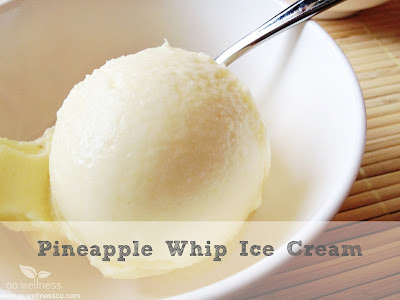 |
| Image credit: Kevin Trautman - GORE-TEX Products via Flickr |
Is your love tank for exercise on empty? Have you been wanting to exercise more but just haven't been able to bring yourself around to doing it? You are not alone. While the most frequent excuse people offer for not exercising is not having enough time, I find that a close number two is that they just don't feel like it. In fact, I'd argue that excuse #2 may actually be the root cause for excuse #1 for many people. So, if you're one of those people who've found yourself in a rut loathing the idea of exercise, then this list is made just for you! Read on for some inspiration that I hope will get you moving more.
Problem #1: You're too focused on how many calories you're burning during exercise.
Nothing kills the joy of a workout like calorie counting. In fact, this could be considered a form of torture in my book. If you spend the majority of your time during a workout checking your heart rate monitor or reviewing the treadmill digital display to determine how many calories you've burned, then you are likely missing so much more out of your workout. When you're so busy counting calories during exercise, you might miss how invigorating it feels to have fresh oxygen surging through your blood, how empowering it is to challenge your body and mind through each movement, and how calming it is to release the tension from your muscles and joints. Once you forget about those calories and become more mindful of how you feel and how you move, you'll get a more enjoyable, more satisfying, and more effective workout as a result.
Problem #2: Your workout sessions are too long.
Many people are still under the impression that if they can't get in a solid hour long (or more) workout, then it isn't worth it. At the same time, the idea of committing to movement for an hour can be daunting. However, the
current body of research suggests that those who perform short bouts of activity (10 minutes or less at a time) throughout the day not only experience similar health outcomes, such as lower blood pressure and cholesterol, to those who perform longer bouts, but they also tend to be more likely to meet current exercise recommendations, too! Newer research also indicates that
high-intensity interval training (HIIT), which involves short bursts of intense activity followed by periods of rest or low-level activity, produces fitness and health outcomes comparable to traditional endurance exercise. Not only can a challenging HIIT workout keep you engaged, but they can also be done in shorter blocks, sometimes around 15-20 minutes per session.
Problem #3: You don't like the type of exercise you're doing.
I can't tell you how many clients I've worked with who started running solely because it's a "really great cardio workout" even though they absolutely hated running. The problem with choosing activities that you loathe is that it can make the chances of you actually doing them much lower. Plus, when some people dislike an activity, they put less effort or focus into it. I've also noticed that when people perform activities they despise they spend most of the time counting down the minutes or miles until it's over. How fun is that? On the other hand, if you choose activities that you enjoy, then you're more likely to do them. In some cases, when you choose enjoyable-to-you activities, you don't even realize you're doing them or how much time has passed. Keep in mind that even if you despise a particular activity, you may eventually find yourself liking it more as you continue practicing it. So don't give up on something simply because you don't immediately enjoy it.
Problem #4: You're comparing yourself to others.
Comparison is the thief of joy. I repeat...COMPARISON IS THE THIEF OF JOY! Thank you Theodore Roosevelt for this truth! I'll admit that it's easy to slip into comparison-mode when working out around others. I think many of us have been there staring down the speed demon on the treadmill next to us, eyeing the buff-looking guy or gal lifting much heavier weights than us, or checking out the Dancing with the Stars-worthy participant in the front of the Zumba class. In order to achieve workout bliss, it's best to stop comparing yourself to others. It's pretty hard to be content with your own progress and accomplishments when you're distracting yourself with someone else's progress or accomplishments. Unfortunately, when we compare ourselves to others, we can be left feeling discouraged, ashamed, disgusted, hopeless, or just plain negative. Those feelings will not produce the most joyful workouts. So stop the comparing and focus your gaze inward. You will get the most satisfaction and joy out of your workout by doing YOUR very best to achieve YOUR own goals. Remind yourself of where you're at and how far you've come. How much better/fitter/healthier/(just fill-in-the-blank here) do you feel compared to how you felt yesterday? A week ago? A month ago? A year ago? Five years ago? Focus on that and feel the bliss.
Problem #5: You haven't tried anything new in a while.
I've worked with a lot of clients who started an exercise routine, and their routine became such a habit that they eventually got stuck in it. They found themselves bored, and eventually, their workouts got shorter and/or less frequent. If you find yourself getting bored with your workouts, don't give them up, change them up! Sometimes it's as simple as changing the scenery of a workout. Do you always take the same route on your runs? Go a different direction. Find a new path or location. Maybe you're ready to incorporate a completely new-to-you activity? Is there a new type of workout you've been wanting to try or a class you've wanted to take? Go for it! Have you balanced out your cardio or strength routine with another element of physical fitness, like flexibility or
neuromotor exercise? Merge these into your workout mix. Are you using the same weights, machines, tools, or gadgets? Try something new. Have you been working out solo? Try getting social. Take a class or join a
Meetup group. There are plenty of ways to change up your routine, so find something that works for you and go for it.
Are you in need of some workout bliss? What will you try? How have you returned joy to your workouts? I'd love to hear from you.
If you found this article helpful, please like, share, and Pin! Thank you!

























